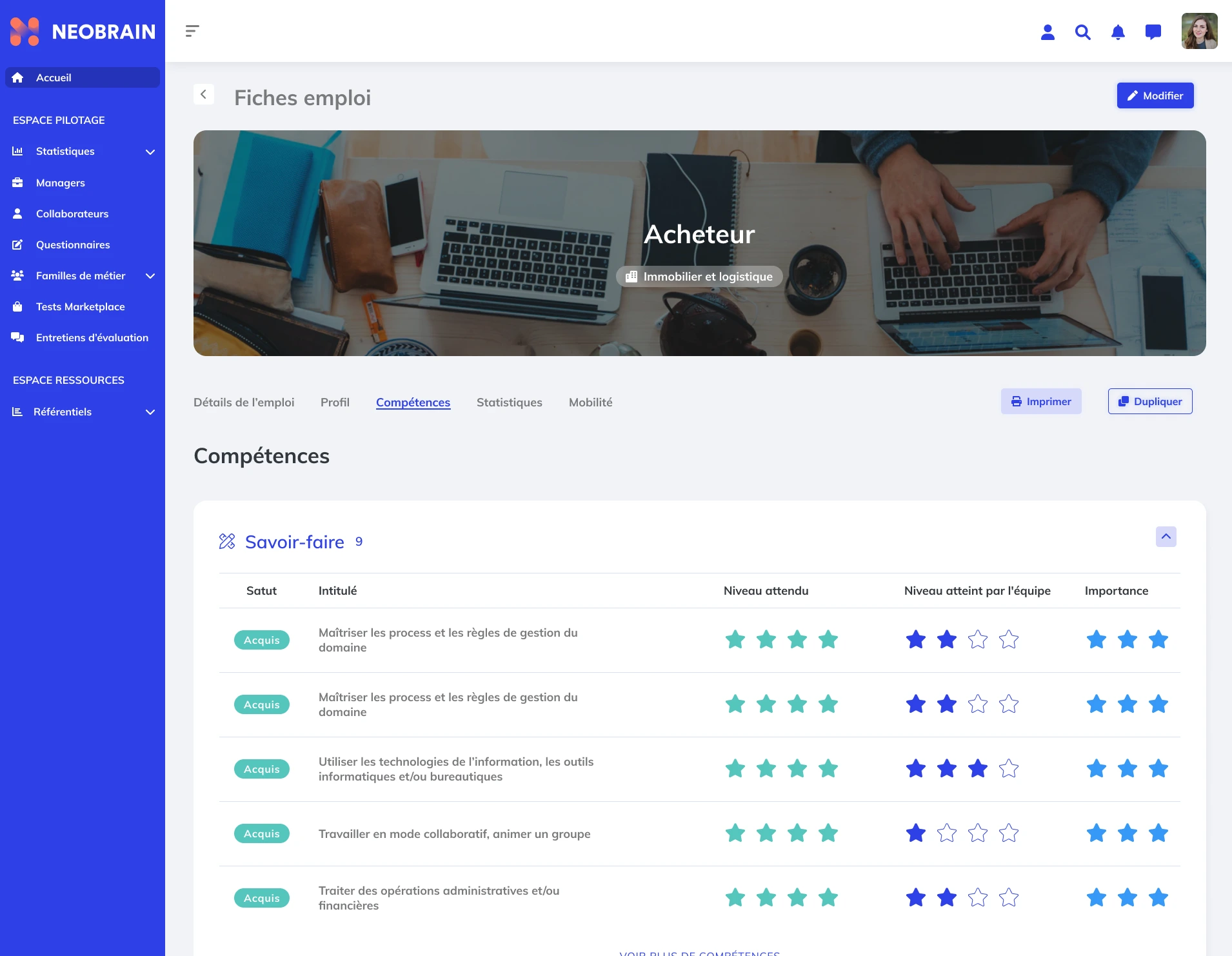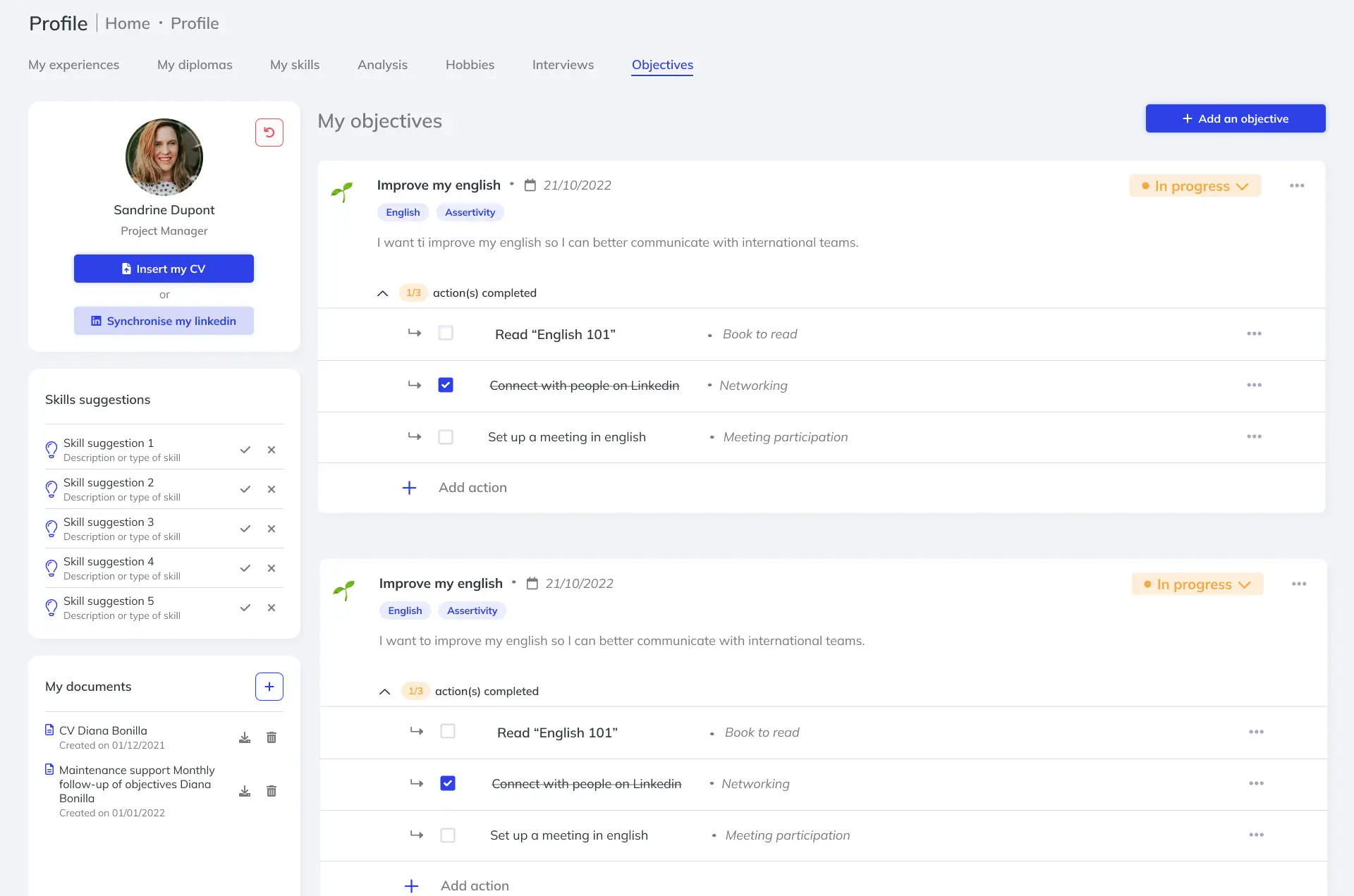The mapping brings to light the skills that need to be strengthened at the individual and collective levels. The discrepancies between skills and the expected levels highlight the priority skills that the HR team will formalize in its training plan.
Mapping and detection of skills to be developed
The performance interview reports on the original levels and the changes observed during the year. From then on, managers and HR can consider the training plans needed to reach the required level of know-how, and their deadlines.
How to detect skills to develop?
The skills to be developed can be detected by several means:
- The difference between the level obtained and the level expected of the employee (see visual below).
- Identification of skills from outside the company, from the industry, from competitors
- The structuring of skills in a logic of flexibility in the allocation of resources

All of our resources related to the mapping of the company’s assets:
- All about mapping skills.
- The checklist to establish a quick mapping
- The Operational Guide to the Strategic Workforce Planning
Offer several training modalities
- Upskilling is the development of an individual’s abilities within a single position.
- Reskilling is the most urgent form of training, since the acquisition of the skill will condition the retention in the position.
- Cross skilling is the answer to acquiring skills in a related business.
Mapping is a decision-making tool for management, but it also has a positive effect on employees. Indeed, a solution like Neobrain will provide, via artificial intelligence, training recommendations to employees. These recommendations originate from the company’s training catalogs to develop the skills identified as being below the required level. The possibilities of suggesting training adapted to each individual are complementary to the training requests from the employee, and the proposals in the hands of HR and managers. When a training is validated, the level of skill is automatically incremented in the learner’s profile.
Consult all the training modalities in our article“the opportunities of rise in skills“.
Involve employees in their training
The communication from HR and managers to employees highlights the benefits of the new tool at their disposal. Transparency is the best way to present the arrival of the solution. If it is a question of reinforcing mobility, or improving support for development, it might as well be communicated in a transparent manner. Some employees will think that this is a new way to reinforce their performance evaluation: evaluation is always accompanied by a development program.

Prior to involving employees in their training, employees will be asked to self-assess their job qualifications. Engaging the employee in the completion of their profile is facilitated by adding the “motivation” dimension to each of the skills they have. The user will be able to express his appreciation for developing certain skills related to his job.
Having a reliable mapping, where employee motivation is taken into account, allows for a better allocation of the training budget.
While insufficient enthusiasm multiplies the learning time by 5 to 9, training motivated people first divides the time and cost by 2.
Other benefits of mapping skills are:
- A more spontaneous commitment of employees to their own development.
- A better transmission of knowledge. You can now anticipate losses of skills from a lack of motivation of the interested parties.
- Agile resource allocation and the creation of an alternative to external recruitment.
Indeed, this type of data is used by managers and HR when deciding on the recruitment or internal mobility option. Indeed, they have access, within the internal talent marketplace, to the employees closest to the required skills.
From then on, it will be a matter of getting closer to internal candidates and measuring the degree to which the position matches their skills. As shown in the visual below, the search filters are adapted to each organization to bring out the best internal profiles.
Internal mobility represented less than 5% of hires in 2018 even though 60% of employees are in favor of it. These movements, most often at the initiative of employees, should now be facilitated with the mapping tools of skills and the talent marketplace.
The decision between recruitment and training is now in your hands thanks to the mapping of the available skills : discover the different use cases listed by Neobrain.







